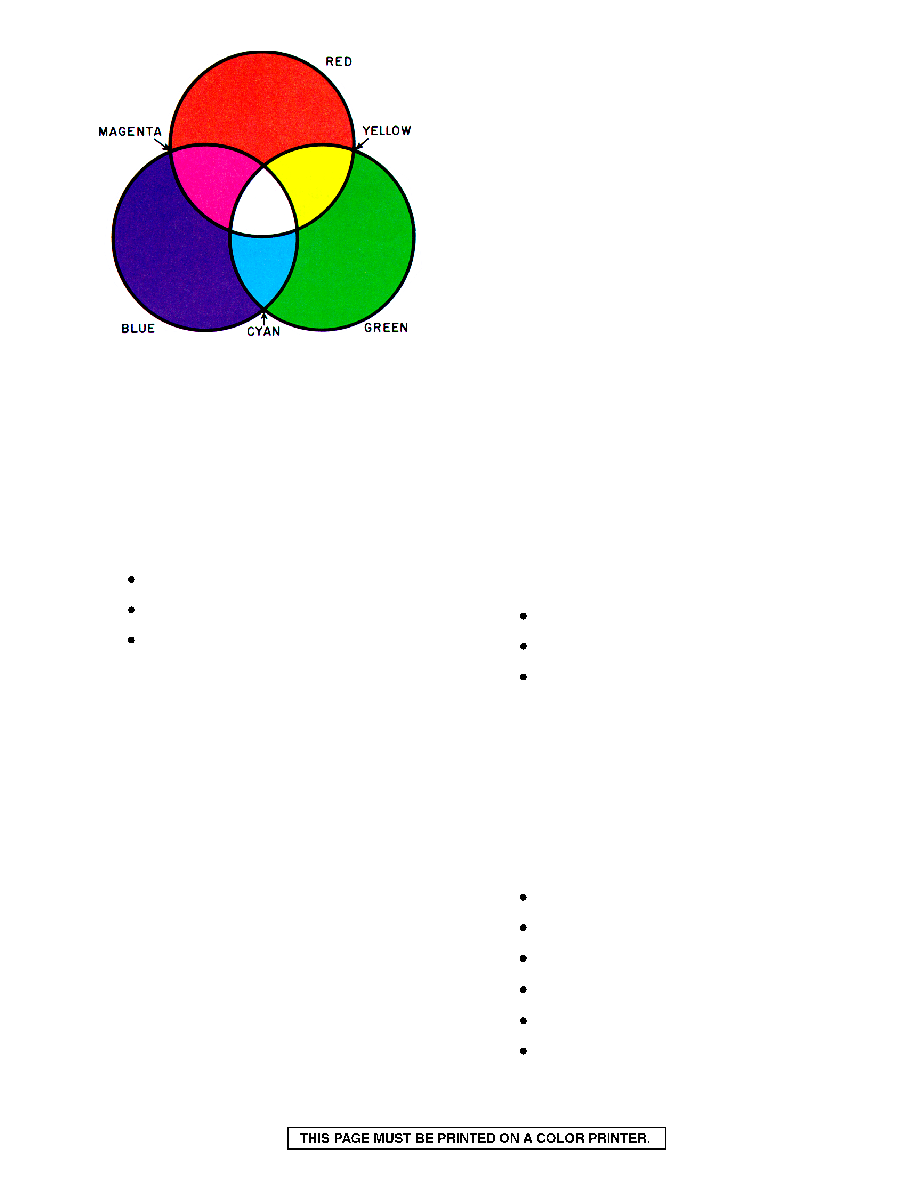
DOFMaster
for Windows
On-line
Depth of Field
Calculator
DOFMaster for Mobile Devices
On-line
Depth of Field
Table
Hyperfocal
Distance Chart
Articles
FAQ
Recommended
Books
Support
Contact
Links
Home
for Windows
On-line
Depth of Field
Calculator
DOFMaster for Mobile Devices
On-line
Depth of Field
Table
Hyperfocal
Distance Chart
Articles
FAQ
Recommended
Books
Support
Contact
Links
Home
As an Amazon Associate I earn from qualifying purchases.
![]()
created; green and blue, cyan is created; blue and red,
magenta is created. In the area where all three light
primaries overlap, you, of course, have white.
magenta, which are the light secondaries. Light
secondaries are the colors produced when two light
primaries are mixed.
name additive primaries indicates that certain colors of
light can be added together to create distinctly new
colors.
red, green, and blue light. Because the emulsions are
sensitive to the additive primaries, they can record all
colors. In the three emulsion layers, three separate,
together, they give a full range of colors.
top or red sensitive emulsion layer, a magenta image in
the middle or green sensitive layer, and a yellow image
in the bottom or blue sensitive layer. These three colors
or dyes-cyan, magenta, and yellow-are what produce
the colors we see when we view a color print. These
colors-cyan, magenta, and yellow-are called the
subtractive primaries.
all other colors of light can be created. When you are
working with light, the additive primaries produce all
the other colors; however, they will not do this as dyes
or pigments; for example, blue and green dyes cannot
be mixed to produce cyan, though blue and green light
can.
cyan, and magenta. Dye couplers are what form the
colors within a color print (or film). The dye
primaries-cyan, magenta, and yellow-can be used
separately or superimposed (mixed), one image over the
other, to produce other colors; that is,
they subtract certain colors from the light falling on
them.
because it is subtracting or absorbing a certain other
color or colors from the light falling upon it; for
example, an object that appears
Basic Photography Course

As an Amazon Associate I earn from qualifying purchases.
WWW.DOFMASTER.COM
© 2006 Don Fleming. All rights reserved.
© 2006 Don Fleming. All rights reserved.